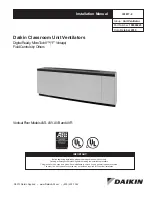
5–121
1
2
3
4
5
6
ït
çi
G3 FACSIMILE COMMUNICATIONS
The following shows the function of the respective bytes.
What Is The “Frame Checking Sequence (FCS)”
The “FCS” is a sequence that checks whether there are any transmission
errors in the frame. FCS is a 2-byte code.
The following briefly describes how the FCS operates.
(1) During transmission of frames, a specific computation is performed on
the content from A (address field) through to FIF (facsimile informa-
tion field) at the transmitting side. The results of that computation is
always expressed as a 2-byte code.
(2) The result of (1) is inserted in FCS (Frame Check Sequence) and
transmitted.
(3) On the receiving side, the reverse computation to that in (1) is exe-
cuted from the address field to the FCS during frame reception.
(4) If the result is equal to a certain value, it can be known that the frame
is free of transmission errors.
This kind of transmission error detection method is called the Cyclic
Redundancy Check (CRC).
Table 5-18 Content of FIF of NSF, NSC and NSS
Byte
Content
1st and
2nd bytes
ITU-T
members’ codes
Code which indicates the nationality
of the manufacturer.
Japan: All bits “0”
3rd byte
Maker code
Code which indicates the name of
the manufacturer.
Canon code is 88H. (See Appendix
10. MAKER CODES TABLE.)
From
the 4th byte
onwards
Free area
Manufacturers can freely use this
area. The contents of other manufac-
turers are unknown.
At Canon, information such as the
“user’s name” and “non-standard
functions” is entered.
Содержание 2000
Страница 36: ...1 28 Notes ...
Страница 62: ...Notes 2 26 ...
Страница 306: ...6 34 Notes ...
Страница 381: ...PRINTED IN JAPAN IMPRIME AU JAPON 0400AB0 40 0 CANON INC Printied on paper that contains 60 reused paper ...
















































